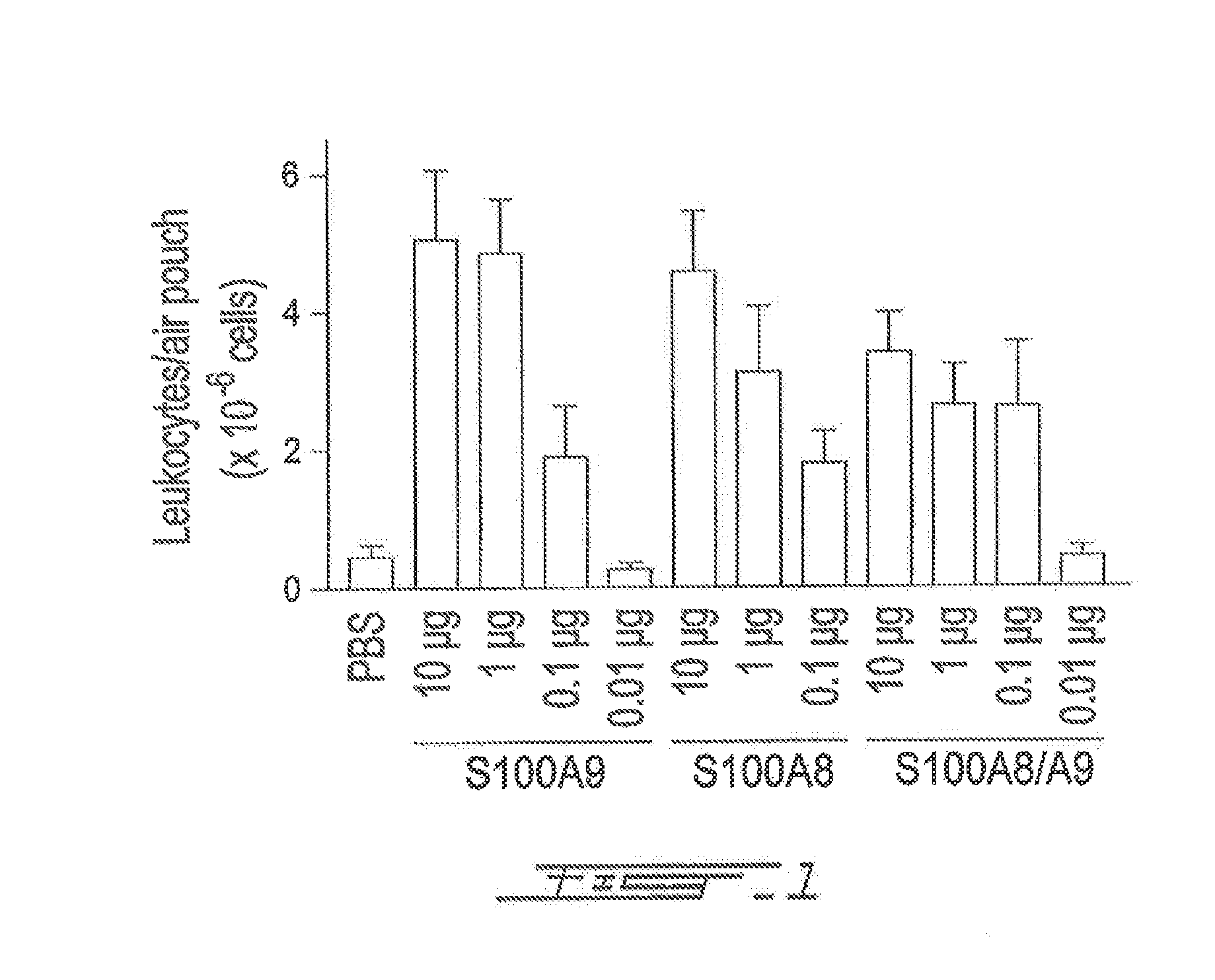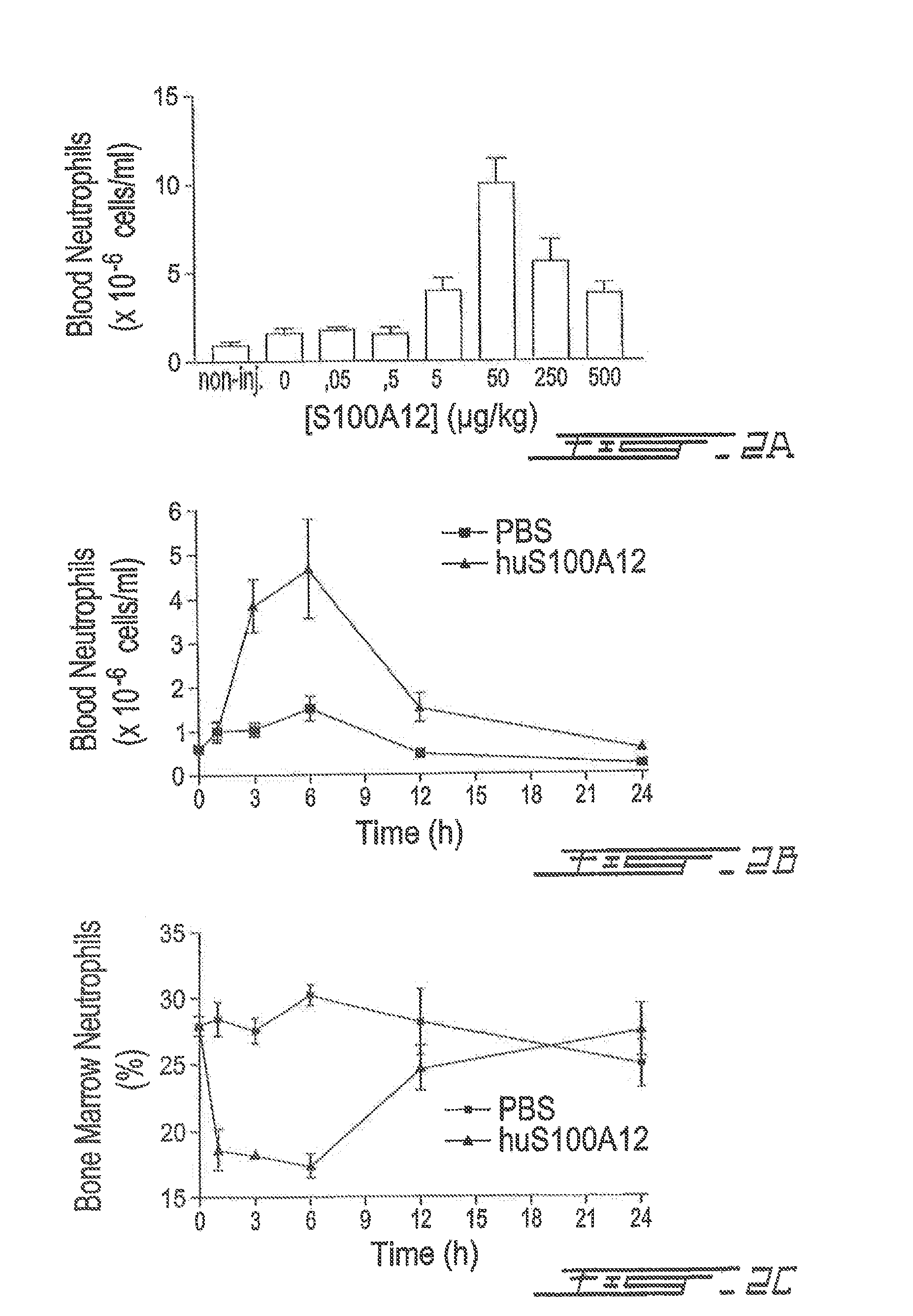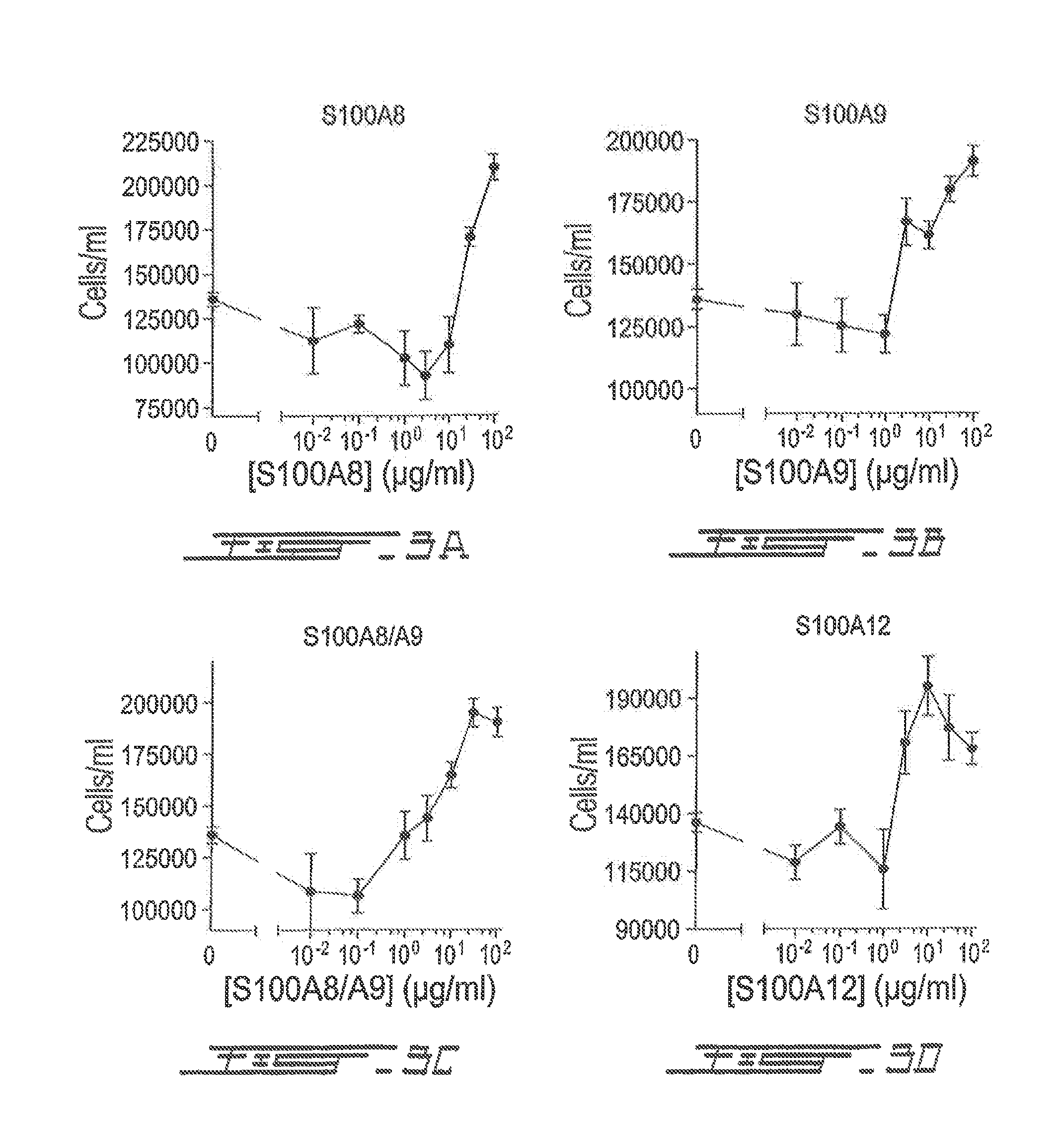S100 protein inhibitors for treating leukemia
a technology of protein inhibitors and leukemia, which is applied in the field of compositions and treatments for patients suffering from leukemia, can solve the problems of bruising and easy bleeding, lack of normal white cells impairing the body's ability to fight infections, and the bone marrow can no longer produce enough normal red and white blood cells and platelets, etc., to achieve the effect of prolonging the life expectancy of the animal, reducing the rate of disease progression, and improving the quality of li
- Summary
- Abstract
- Description
- Claims
- Application Information
AI Technical Summary
Benefits of technology
Problems solved by technology
Method used
Image
Examples
example i
Leukocyte Accumulation Induced by Murine S100A8 in the Air Pouch Model
Material and Methods
Cells Preparation
[0080]Peripheral blood and bone marrow cells (BM) from AML, CML patients and healthy donors (graciously given by Dr Robert Delage, Hôpital de l'Enfant-Jésus, Québec) were centrifuged to collect sera, then peripheral blood mononuclear cells (PBMC) were isolated using erythrocyte sedimentation by dextran 2% followed by Ficoll-paque gradient centrifugation. In AML and CML patients, the PBMC fraction was enriched in immature progenitors and precursor cells.
Recombinant S100 Proteins
[0081]Human S100 protein cDNA were cloned into the pET28 expression vector. Recombinant protein expression was induced with 1 mM IPTG in E. coli HMS174. The bacteria were then lysed by sonication and recombinant His-tag S100 proteins were purified using a nickel column. S100 proteins bound to the column were freed by incubation with biotinylated thrombin and were eluted with PBS containing 0.5 M NaCl. Str...
example 11
Effect of Increasing Concentrations of Murine S100A812 on Circulating Neutrophils in Blood
[0086]Increasing doses of murine S100A12 or PBS were injected i.v. into the tail vein of mice and blood was harvested by cardiac puncture 3 h later. Total leukocytes were counted using a haemocytometer following acetic blue staining. Cytospin preparations of leukocytes were analyzed after Wright-Giemsa staining. Data represent the mean±SEM of at least 6 mice for each group (FIG. 2). *p<0.05, **p<0.01, Dunnett multiple comparison test. It is observed from the present data that S100 protein S100A12 has a significant stimulatory activity on the proliferation of cells in the blood.
example iii
Effect of S100A8 on Bone Marrow Cell Proliferation
[0087]Bone marrow cells were collected by flushing PBS through incisions made in the femurs of mice, followed by disaggregation. After removing contaminating erythrocytes by hypoosmotic lysis, bone marrow cells were cultured in semi-solid state in Methocult methylcellulose-based media (Stemcell technologies) for 14 days in presence of increasing concentrations of S100A8. At the end of the incubation period, the colonies were numerated. Similar results were obtained with S100A9, S100A8 / A9, and S100A12. Results are from one experiment representative of 2 others (FIG. 3). All monomers and heterodimers have shown a growth stimulatory activity on bone marrow cells.
PUM
| Property | Measurement | Unit |
|---|---|---|
| time | aaaaa | aaaaa |
| optical density | aaaaa | aaaaa |
| compositions | aaaaa | aaaaa |
Abstract
Description
Claims
Application Information
 Login to View More
Login to View More - R&D
- Intellectual Property
- Life Sciences
- Materials
- Tech Scout
- Unparalleled Data Quality
- Higher Quality Content
- 60% Fewer Hallucinations
Browse by: Latest US Patents, China's latest patents, Technical Efficacy Thesaurus, Application Domain, Technology Topic, Popular Technical Reports.
© 2025 PatSnap. All rights reserved.Legal|Privacy policy|Modern Slavery Act Transparency Statement|Sitemap|About US| Contact US: help@patsnap.com



